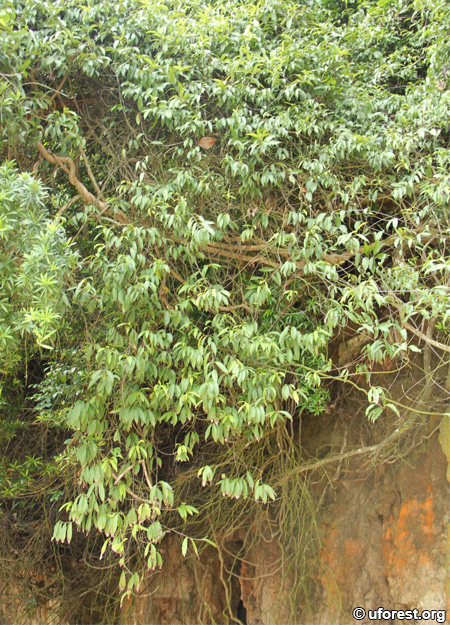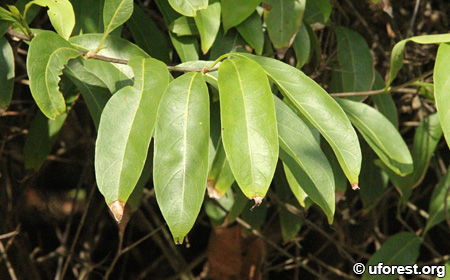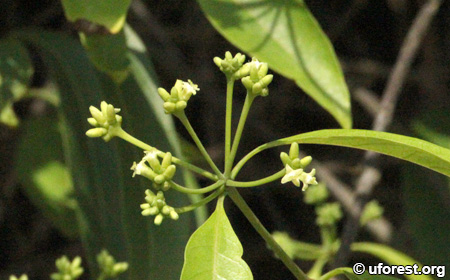Gynochthodes umbellata (L.) Razafim. & B. Bremer
| Etymology | Genus | Gyno="female", chthodes="close to the ground", reference to plant unknown |
|---|---|---|
| Species | In an umbel, referring to the type of inflorescence structure | |
| Family | Rubiaceae | |
| Synonyms | Morinda umbellata L., Guttenbergia umbellata (L.) Zoll. & Moritzi, Morin | |
| Common Names | Common Indian Mulberry, Akar Ketang, Akar Perut Ayam | |
| Status | Native: Common | |
| Form | Woody Climber | |
| Native Distribution | China , Japan, India, Sri Lanka, Indochina, Australia | |
Diagnostics:
A common woody climber found in coastal areas and inland forests, Gynochthodes umbellata has linear and hairless leaves, with margins that are unevenly wavy. The mid-vein may sometimes be reddish. The tiny white flowers are arranged in an umbel, while the ripe fruits are orange.
Interesting Facts:
Recent molecular studies have resulted in the change of its genus from Morinda to Gynochthodes (Razafimandimbison & Bremer, 2011).

Sprawling climber at a Sentosa rocky coast.

Narrow leaves.

Leaf underside.

Flowers arranged in an umbel.

Orange fruits.
References
Razafimandimbison SG & Bremer B (2011) Nomenclatural changes and taxonomic notes in the tribe Morindeae (Rubiaceae). Adansonia, 33(2): 283-309.
Author: Siyang
Posted: 2018-11-30 / Modified: 2025-09-03
Google Ads